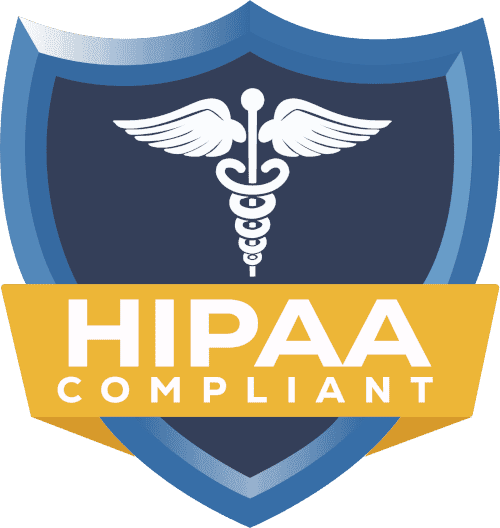What Is the Credentialing Process for Nurse Practitioners: A Comprehensive Guide

This guide is for nurse practitioners who need to know, or want to know more about, the credentialing process to establish or advance their careers. At first glance, the NP credentialing process can seem like a lot to take in, but breaking it down into steps makes it more manageable. This article explores what credentialing for nurse practitioners entails and why it’s critical to your professional success.
Understanding Advanced Practice Nursing Credentials
Prior to engaging in the credentialing process, it is important to define some key terms. An APRN credential will cover registered nurses who have pursued and completed advanced education and training above and beyond the basic requirements for nursing, which pertains to multiple specialized roles:
- Nurse Practitioners
- Clinical Nurse Specialists
- Certified Registered Nurse Anesthetists
- Certified Nurse Midwives
Within this framework, CRNP means Certified Registered Nurse Practitioner. But what is CRNP? It’s a title used in certain states to identify nurse practitioners who have met certification requirements. In other states, you may find the NP designation in place of CRNP, but essentially they relate to the same function with maybe different state specific requirements.
The Core Components of NP Credentialing
The NP credentialing process comprises several distinct components, all of which collaborate to ensure that your qualifications:
1. Educational Verification
Confirming you have completed an accredited graduate level nursing program, typically a Master of Science in Nursing (MSN) or Doctor of Nursing Practice (DNP) with a nurse practitioner specialization.
2. Licensure Verification
This step verifies your RN license is current and in good standing in your state of practice.
3. National Certification
This certifies you have successfully completed a national certification exam in your area of specialty, which may include:
- Family Nurse Practitioner (FNP)
- Adult Gerontology Acute Care Nurse Practitioner (AGACNP)
- Psychiatric Mental Health Nurse Practitioner (PMHNP)
- Pediatric Nurse Practitioner (PNP)
- Women’s Health Nurse Practitioner ( WHNP )
4. State Advanced Practice Licensure
This will be the application process for advanced practice licensure or recognition through your state board of nursing.
5. DEA Registration
This is a federal credential that allows the signing of prescriptions for controlled substances.
6. Insurance Panel Credentialing
This process makes you able to be known by insurance firms for paying back money.
7. Hospital Privileges
This credentialing lets you work in some hospital settings.
The NP Credentialing Process: Step by Step
Now let’s go through the usual order of events in credentialing for nurse practitioners:
Step 1: Complete Your Education
The base of your credentials is your nursing learning. This usually includes:
- Getting a BSN degree
- Postgraduate nursing course (MSN or DNP) with NP focus
- Clinical practicum hours (usually 500 to over 1000 depending on the area of expertise and program)
Step 2: Obtain National Certification
After finishing your studies, you will take a national certification test in the field of specialty through:
- American Nurses Credentialing Center(ANCC)
- American Academy of Nurse Practitioners Certification Board(AANPCB)
- Pediatric Nursing Certification Board(PNCB)
- National Certification Corporation(NCC)
This certification will confirm your knowledge and skills in a particular area.
Step 3: Apply for State Licensure
With the national certification, you will apply for state level advanced practice recognition or licensure. This process usually includes:
- Submitting proof of education and certification
- Applying to pay application fees
- Undergoing background checks
- Applying for prescriptive authority if applicable in the state
- Collaborative practice agreements if required in the state
Requirements vary a lot by state so research specific state board of nursing requirements carefully.
Step 4: Obtain a National Provider Identifier (NPI)
You will have to register for an NPI number with the National Plan and Provider Enumeration System NPPES. This 10 digit number, unique to you, is needed for insurance billing and other transactions in healthcare. Step 5: Register with DEA If you will be prescribing controlled substances, you need to register with DEA which includes:
- Applying
- Fee payment
- Registration renewal every three years
Step 6: Apply for Hospital Privileges
If you want to work in a hospital, you will have to go through hospital credentialing. This usually includes:
- An application that deeply probes your education history
- Documentation of work experience
- Logs of procedures if applicable
- Letters of reference
- Proof of certifications and licenses
- Verification of malpractice insurance
Step 7: Complete Insurance Credentialing
You must finish credentialing with each payer to be able to get paid back by them for your services. This includes:
- Completing a CAQH ProView profile
- Applications from individual insurance companies
- Contract negotiations
- Electronic payment system enrollment
Common Challenges in the NP Credentialing Process
Some of the obstacles that typically arise in nurse practitioners’ credentialing are:
Time Delays
The entire process of NP credentialing may take about three to six months to be completed. Insurance credentialing alone often takes 60 to 120 days.
Documentation Management
You will have to maintain a lot of documents as well as track the status of multiple applications at the same time.
State Variations
Requirements can vary widely between states, especially as related to scope of practice prescriptive authority and agreement requirements.
Renewal Tracking
Credentials have to be renewed regularly, and times each with different renewal times.
Best Practices for Successful NP Credentialing
To navigate the credentialing process efficiently:
Start Early
Navigate the credentialing process efficiently by collecting documentation and researching requirements several months before you graduate.
Create a Tracking System
Create a spread sheet or use a credentialing management tool to watch application status, renewal date, and contact information.
Maintain Digital Copies
Keep digital copies of all important documents, certificates, and licenses for easy access.
Consider Professional Help
Many nurse practitioners find value in services that offer help with credentialing and navigating these complex processes.
Join Professional Organizations
Groups like the American Association of Nurse Practitioners (AANP) share resources and tips for the credentialing journey.
The Importance of Maintaining Your APRN Credential
Once you’ve completed the initial NP credentialing process, maintaining your credentials is equally important:
- National certifications usual need renewal every 5 years
- State APRN licenses usual require renewal every 12 years met for both
- Continuing education requirement
- DEA registration renews every years.
- Hospital privileges usually need reapplication after every 2 years
Credentialing failure in any element can cause an interruption in practice and reimbursement issues.
Conclusion
While the NP credentialing process is undoubtedly complex, understanding the steps and requirements helps you navigate it more efficiently. Your credentials as a nurse practitioner not only represent your qualification but also are pivotal to your practice, reimbursement, and patient care under your full scope of practice.
If approached methodically and with proper organization during the credentialing process, many delays can be averted that would otherwise slow down the establishment of the practice. Credentialing is an ongoing aspect of professional life you will have as an advanced practice nurse.
Whether you are a new graduate or an experienced NP changing practice settings, mastering the credentialing process is a critical skill that will stand you in good stead throughout your career. The effort put into proper credentialing ultimately widens your practice opportunities and ensures that you can concentrate on what matters most: excellent patient care.



















